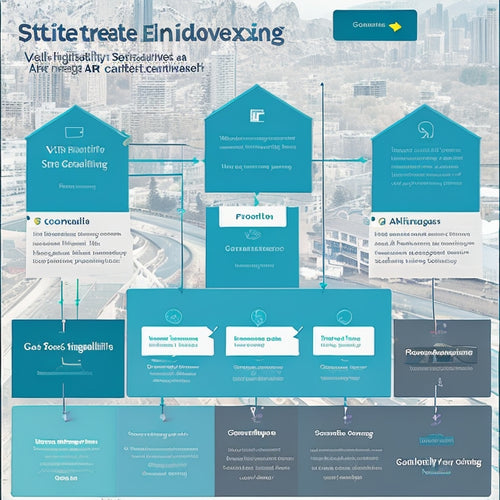
Rising Threat: Fraudsters Target Digital Goods Market
Share
Fraudsters are increasingly targeting the digital goods market, exploiting security vulnerabilities and online transaction anonymity to steal credentials and financial information. This results in significant losses for both consumers and merchants, including reputational damage and financial losses. To combat this rising threat, it is fundamental to understand the tactics employed by fraudsters, including phishing, social engineering, and credential stuffing. Implementing robust security measures, multi-factor authentication, and machine learning-based fraud detection is essential for prevention. As the digital landscape continues to evolve, staying ahead of fraudsters' strategies is critical for maintaining a secure and trustworthy online environment.
Key Takeaways
• Fraudsters target digital goods market, exploiting security vulnerabilities and online transaction anonymity for financial gain.
• Stolen account credentials and password reset mechanisms are commonly used tactics by fraudsters to commit fraud.
• Merchants suffer significant revenue losses and reputational damage due to fraud, with chargeback losses increasing by 60%.
• Prevention strategies, including multi-factor authentication and machine learning-based fraud detection, are crucial to combating fraud.
• Understanding fraudsters' tactics and prioritizing fraud prevention is essential for maintaining a secure and trustworthy online environment.
Digital Goods Under Attack
As the digital goods market continues to prosper, fraudsters are increasingly targeting this profitable industry, exploiting vulnerabilities in security systems and capitalizing on the anonymity of online transactions.
The impact on consumers is significant, with stolen credentials and financial losses being just the tip of the iceberg. Furthermore, the reputational damage to merchants can be devastating.
To combat this growing threat, prevention strategies are essential. Merchants must implement robust security measures, such as multi-factor authentication and machine learning-based fraud detection systems.
Additionally, educating consumers on the importance of account security and password hygiene is vital.
Fraudsters' Modus Operandi
Fraudsters employ a range of sophisticated tactics to infiltrate digital goods marketplaces, often leveraging stolen account credentials and exploiting weaknesses in password reset mechanisms to gain unauthorized access. They utilize various fraud techniques, such as phishing, social engineering, and credential stuffing, to obtain sensitive information.
To stay ahead, it's vital for merchants to implement robust prevention strategies, including multi-factor authentication, IP blocking, and machine learning-based fraud detection systems. By understanding the modus operandi of fraudsters, digital goods businesses can better equip themselves to combat fraud and protect their customers' sensitive information.
A proactive approach to fraud prevention is essential in today's digital landscape, where fraudsters are constantly evolving their tactics.
Consequences for Merchants
Digital goods merchants face devastating consequences, including significant revenue losses and damage to their reputation, when they fail to effectively combat fraud in their online marketplaces. The financial impact is substantial, with chargeback losses increasing by 60% and false positives rising by 25-27%.
Furthermore, retailers are forced to allocate a significant portion of their operational budgets, up to 20%, to fraud management. This not only affects their bottom line but also erodes customer trust, an essential component of successful digital goods businesses.
When merchants fail to address fraud issues, they risk losing loyal customers and damaging their brand reputation. It's important for merchants to prioritize fraud prevention to mitigate these consequences and maintain a secure and trustworthy online environment.
Frequently Asked Questions
How Can Digital Goods Merchants Balance Security With Seamless User Experience?
To balance security with seamless user experience, digital goods merchants can implement robust user authentication measures, such as biometric login and behavioral analysis, to guarantee secure transactions while minimizing friction and preserving a seamless user journey.
What Role Do Mobile Devices Play in Digital Goods Fraud Detection?
Mobile devices play an essential role in digital goods fraud detection, as mobile device authentication and fraud detection algorithms can analyze user behavior, location, and device fingerprinting to identify and prevent fraudulent transactions.
Can Automated Fraud Detection Systems Reduce False Positives Effectively?
'An ounce of prevention is worth a pound of cure.' Automated fraud detection systems can greatly reduce false positives by leveraging machine learning algorithms that prioritize accuracy over efficiency, ensuring a more effective fraud detection process.
How Can Merchants Protect Customer Accounts From Takeover and Resale?
To safeguard customer accounts from takeover and resale, merchants must prioritize robust account security measures, such as multi-factor authentication and anomaly detection, to prevent fraudsters from exploiting vulnerabilities and reselling stolen credentials.
What Measures Can Be Taken to Prevent Automated Fraud Attacks on Digital Goods?
Just as a skilled gamer navigates a virtual maze, merchants must outsmart fraudsters by deploying robust fraud prevention measures, such as automated tools, to safeguard digital goods and bolster cybersecurity, ensuring a seamless user experience.
Related Posts
-

Proven Strategies to Boost App Installs for Your Shopify Store
This article explores proven strategies to enhance app installs for a Shopify store. It delves into the benefits of ...
-

What Is a Search and Discovery App in Shopify
This article aims to provide a comprehensive understanding of the concept of a search and discovery app in the conte...
-

What Are the Benefits of Sitemaps for SEO
Sitemaps play a crucial role in search engine optimization (SEO) by enhancing website visibility and improving ranki...


